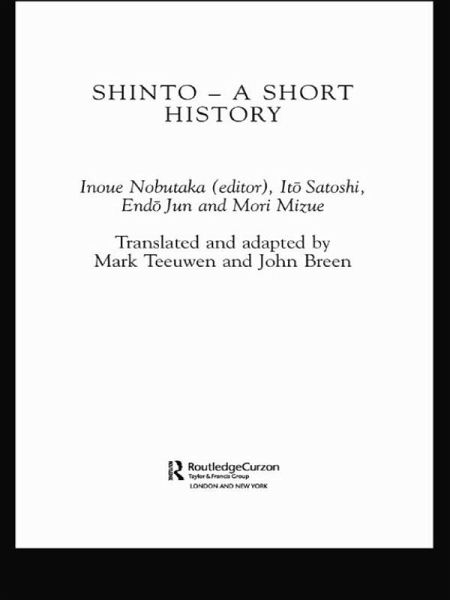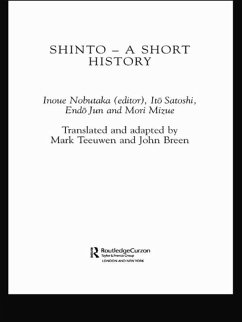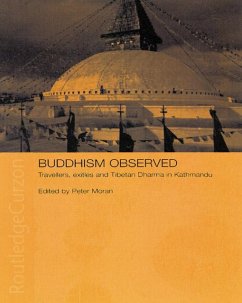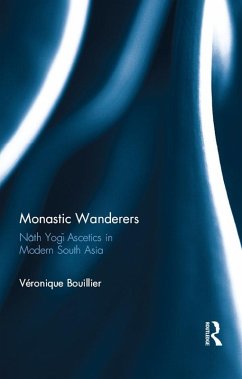
Shinto (eBook, PDF)
A Short History
Redaktion: Inoue, Nobutaka; Satoshi, Ito; Mizue, Mori; Jun, Endo / Übersetzer: Breen, John; Teeuwen, Mark
Versandkostenfrei!
Sofort per Download lieferbar
70,95 €
inkl. MwSt.
Weitere Ausgaben:

PAYBACK Punkte
35 °P sammeln!
Shinto - A Short History provides an introductory outline of the historical development of Shinto from the ancient period of Japanese history until the present day. Shinto does not offer a readily identifiable set of teachings, rituals or beliefs; individual shrines and kami deities have led their own lives, not within the confines of a narrowly defined Shinto, but rather as participants in a religious field that included Buddhist, Taoist, Confucian and folk elements. Thus, this book approaches Shinto as a series of historical 'religious systems' rather than attempting to identify a timeless '...
Shinto - A Short History provides an introductory outline of the historical development of Shinto from the ancient period of Japanese history until the present day.
Shinto does not offer a readily identifiable set of teachings, rituals or beliefs; individual shrines and kami deities have led their own lives, not within the confines of a narrowly defined Shinto, but rather as participants in a religious field that included Buddhist, Taoist, Confucian and folk elements. Thus, this book approaches Shinto as a series of historical 'religious systems' rather than attempting to identify a timeless 'Shinto essence'.
This history focuses on three aspects of Shinto practice: the people involved in shrine worship, the institutional networks that ensured continuity, and teachings and rituals. By following the interplay between these aspects in different periods, a pattern of continuity and discontinuity is revealed that challenges received understandings of the history of Shinto.
This book does not presuppose prior knowledge of Japanese religion, and is easily accessible for those new to the subject.
Shinto does not offer a readily identifiable set of teachings, rituals or beliefs; individual shrines and kami deities have led their own lives, not within the confines of a narrowly defined Shinto, but rather as participants in a religious field that included Buddhist, Taoist, Confucian and folk elements. Thus, this book approaches Shinto as a series of historical 'religious systems' rather than attempting to identify a timeless 'Shinto essence'.
This history focuses on three aspects of Shinto practice: the people involved in shrine worship, the institutional networks that ensured continuity, and teachings and rituals. By following the interplay between these aspects in different periods, a pattern of continuity and discontinuity is revealed that challenges received understandings of the history of Shinto.
This book does not presuppose prior knowledge of Japanese religion, and is easily accessible for those new to the subject.
Dieser Download kann aus rechtlichen Gründen nur mit Rechnungsadresse in A, B, BG, CY, CZ, D, DK, EW, E, FIN, F, GR, HR, H, IRL, I, LT, L, LR, M, NL, PL, P, R, S, SLO, SK ausgeliefert werden.













